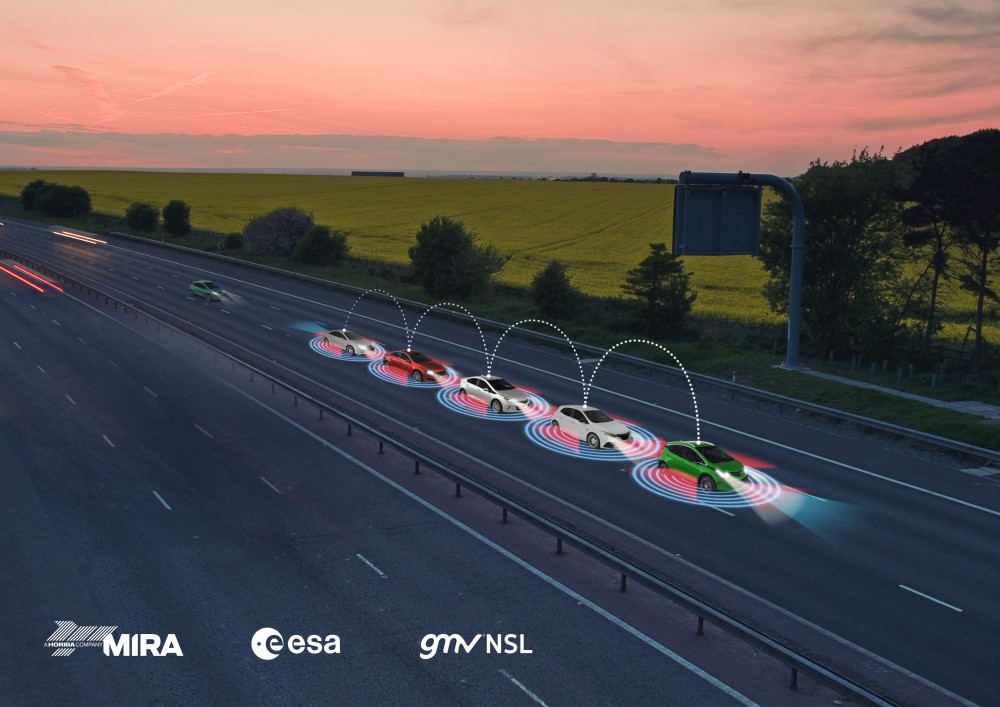GMV and HORIBA MIRA collaborate in a traffic platooning scheme

GMV NSL and HORIBA MIRA are collaborating in a groundbreaking, cutting-edge project to streamline traffic flows by means of a highway traffic-platooning scheme.
The technology is based on cooperation between all platoon vehicles to share their respective positions on the road. Cooperative positioning involves integration of information from several different sensors such as satnavs (GNSS), inertial sensors, vehicle odometer and relative ranging sensors. This sensor data is shared between vehicles by way of low latency wireless communications. Finally, the position calculated from these positioning algorithms is double-checked by an integrity algorithm to make sure it gives a “trustworthy” reading of the vehicle platoon’s positions.
Integration of all this self-driving technology will provide a series of benefits for both drivers and the public at large. Passengers will be able to enjoy more fluid driving conditions on the strength of optimized breaking and acceleration profiles. This will in turn improve vehicle efficiency and cut down emissions. The improved performance on existing highways also means fewer new roads will have to be built, even at a time when road traffic looks set to increase steadily into the future. A cooperative positioning solution also trims hardware costs, while integrity algorithms ensure road safety and robustness. They can also be used securely and reliably to optimize speed and headway.
The project is funded under the ESA Navigation Innovation and Support Program (NAVISP) and it will serve as the roadmap for ESA’s future developments and boost the takeup of GNSS and communication technologies by the automotive sector.
*******
The view expressed herein can in no way be taken to reflect the official opinion of the European Space Agency